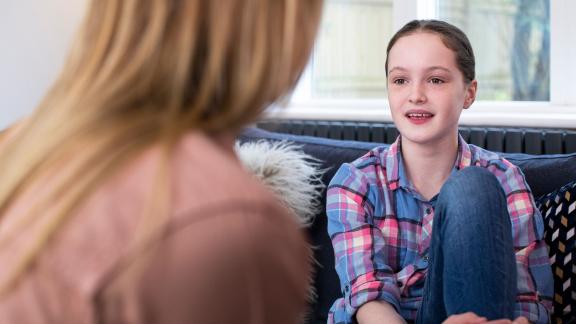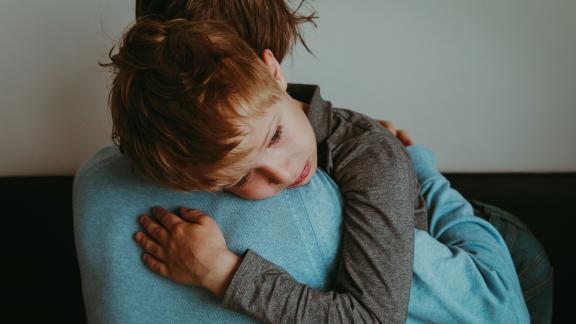Partnership working in Doncaster to support children and young people’s mental health

The Doncaster Children’s Partnership set up the multi-agency Social and Emotional Mental Health (SEMH) Group, which brings together key influencers and decision-makers from the CCG, local authority, children and young people’s mental health service provider and other partners. The SEMH promotes better joint assessments, planning and service delivery for vulnerable young people in need of care, which has led to reduced delays and improved access to appropriate help and support for children and young people in the local area.
Key benefits and outcomes
- Improved multi-agency working through developing good working relationships and trust between partners.
- Timely access to appropriate help and support for children and young people, regardless of where they present or what the presenting issue is.
- Improved support for case managers in risk management and care planning through weekly virtual joint meetings to share and discuss cases.
- Better understanding of the needs of children and young people and the impact on different agencies.
What the organisation faced
Children and young people’s mental health requires a multi-agency response because of the very nature of mental health, which may have a number of underlying concerns and their needs may be picked up by a number of agencies.
The Doncaster Children’s Partnership set up the multi-agency Social and Emotional Mental Health (SEMH) Group, to bring together key influencers and decision-makers from the integrated care board, local authority, children and young people’s mental health service provider and other partners. The SEMH promotes better joint assessments, planning and service delivery for vulnerable young people in need of care.
Prior to the setting up of the SEMH group, those working with children were often challenged by time-consuming debates around who was best placed to plan care and provide treatment or support. The SEMH group started to be developed prior to 2020, but the pandemic saw the SEMH’s work accelerate following an increase in children and young people accessing the emergency department due to a suicide attempt, or because they had self-harmed and partners such as schools did not necessarily know that this had happened.
What the organisation did
Having the support and authorisation from executive leads across the Doncaster partnership has ensured cross-organisation participation and buy in. Some members of the group had already been working together and this familiarity helped to build up those all-important relationships and trust.
The SEMH group adapted its ways of working to hold virtual, multi-agency meetings on a weekly basis. Prior to the pandemic, the group would share and discuss cases where a young person had presented into the emergency department that week with suicide ideation, self-harm and /or other emotional mental health issues. Since the pandemic began and the group has developed, they now discuss cases where members of the SEMH group are concerned about the mental health of a child, especially if they may need admission to an inpatient CAMHS bed. The group takes a holistic view of what support these children and young people need, which may include CAMHS support, but could also be other support where the concern is linked to other life factors such as problems at school or with family or friendship groups.
The intelligence gathered in these meetings is used to ensure the right support is put in place for children and young people.
The integrated care board (ICB) representatives bring a system-wide perspective and impartiality to the group. The ICB’s designated nurse for children’s safeguarding and looked-after children is a key member and can bring the influence and authority of the designated role. The designated nurse and deputy can escalate any enduring issues that cannot be resolved as a group. The objective role of the ICB brings all partners together, rather than one or other partners leading the way and pushing subjective agendas. The designated role has been well received by the group and is seen to help drive the work forward.
Results and benefits
The work of the SEMH group has led to a better understanding of the holistic needs of children and young people experiencing social, emotional and / or mental health issues.
The development of the group has helped the different agencies work together more effectively, understand each other’s pressures, and ensure that children and young people receive the support they need. For instance, if a young person is admitted to ED because they have self-harmed or have tried to take their own life, then the joined-up work of the SEMH group helps ensure that other agencies know this, and that the child will receive the support they need.
Partnerships and networks across the membership have improved, work outside of the weekly meeting helps children receive the right care at the right time and ensures their needs remain a priority.
Whilst this work involves an additional weekly meeting, the approach has enabled the group to work smarter rather than harder.
Takeaway tips
- A joined-up approach to supporting children and young people across the area means working smarter rather than harder.
- Good governance arrangements are essential for joint working
- Make sure you have support and authorisation from the respective bodies’ executives leads from across the partnership.
Further information
For further information about the work in this case study, please contact Andrea Ibbeson, deputy chief nurse at, Doncaster Integrated Care Board: andrea.ibbeson@nhs.net



